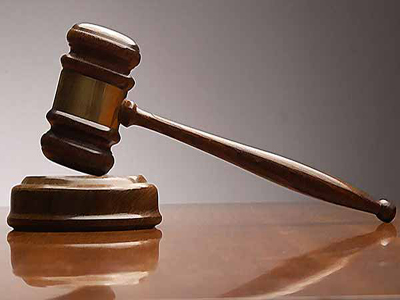U.S. Supreme Court: Patent Office Allowed To Cancel Bad Patents
In one of the most important patent cases in recent years, the Supreme Court ruled that the Patent Office can not only issue patents, but can also retract them. The ruling should deter aggressive patent holders from going after other companies, unless they are certain that their patents will withstand a review, which should result in less litigation across industries.
Bad Patents On Notice
Over the past few years, the Supreme Court has taken an increasingly strict stance on patents. For instance, in 2013, it ruled that human genes can not be patented. In 2014, the Court ruled that abstract ideas also can’t be patented.
The latter ruling alone seems to have invalidated more than half of the patents of some large corporations, such as Microsoft and Google. However, both companies filed amicus curiae in support of the invalidation, as they feared “patent trolls” more than they wanted to make use of those patents themselves against others. Microsoft was later able to get a patent lawsuit from another company after the ruling.
The Supreme Court has also overturned multiple rulings from the Court of Appeals for the Federal Circuit (CAFC), which has historically taken the side of strict enforcement of patents and copyright.
In a recent case between two oil drilling companies, Oil States Energy Services and Greene’s Energy Group, the former argued that it was unconstitutional for an administrative law board of the Patent Office to retract patents, because that should be the job of the courts. This administrative law board, called the Patent Trial and Appeal Board (PTAB), was created in 2012 as part of the America Invents Act as a way to lower the costs of litigation.
The Supreme Court disagreed because the way patents are granted has been decided by Congress all this time, not courts, and therefore Congress can also control how the bad patents are retracted.
Justice Thomas, who was one of the seven justices to uphold the constitutionality of the PTAB, said in the ruling:
Get Tom's Hardware's best news and in-depth reviews, straight to your inbox.
Inter partes review falls squarely within the public rights doctrine. This Court has recognized, and the parties do not dispute, that the decision to grant a patent is a matter involving public rights—specifically, the grant of a public franchise. Inter partes review is simply a reconsideration of that grant, and Congress has permissibly reserved the PTO’s authority to conduct that reconsideration. Thus, the PTO can do so without violating Article III.
Chief Justice Roberts and the new Justice Gorsuch, who was appointed by President Trump last year, dissented, arguing that only Article III judges (judges from the Courts of Appeal, the Court of International Trade, or the Supreme court) should be able to decide the validity of a patent.
Not Out Of The Woods Yet
Delaware Senator Chris Coons introduced the STRONGER Patents Act last year, which among other “terrible ideas” (according to the EFF), also guts the Patent Office’s authority to review bad patents and retract them.
The EFF promised to continue to fight for good patent reform and against bad patent laws. As Justice Thomas said in the ruling, the Patent Office’s ability to review patents protects the public’s “paramount interest in seeing that patent monopolies are kept within their legitimate scope.”
Lucian Armasu is a Contributing Writer for Tom's Hardware US. He covers software news and the issues surrounding privacy and security.
-
Soda-88 While this does solve patent trolling, it also opens the gates for corporate corruptionReply -
InvalidError Reply
I wouldn't say it solves it since considerable harm can be done to companies defending themselves against patent trolls long before cases get to Supreme Court where the patents may get successfully scrapped, but it is a step in the right direction. The real first step in protecting against trolling would be to substantially raise the bar on what constitutes a legitimate patentable invention.20916208 said:While this does solve patent trolling, it also opens the gates for corporate corruption
-
wiyosaya Maybe if the patent office did their due diligence up-front, bad patents would not be a problem in the first place. I get that recent laws have invalidated a number of patents, however, there have, AFAIK, been problems in the past with patents that should never have been granted even outside of any conditions that would have caused patents to fall into the categories of patents that have just been invalidated like abstract ideas.Reply -
bit_user Reply
The point of the article - stated in the headline and first sentence - is that the US Patent Office now has the authority to invalidate bad patents. Perhaps you missed that.20916242 said:
I wouldn't say it solves it since considerable harm can be done to companies defending themselves against patent trolls long before cases get to Supreme Court where the patents may get successfully scrapped,20916208 said:While this does solve patent trolling, it also opens the gates for corporate corruption -
bit_user Reply
This is sort of a red herring. No matter how good the USPTO does in vetting patent applications, some bad ones will always slip through.20916504 said:Maybe if the patent office did their due diligence up-front, bad patents would not be a problem in the first place.
The system can't depend on the USPTO doing a perfect job of vetting. The right solution is to make the system self-supporting by allowing defendants to challenge the legitimacy of patents they're accused of infringing. Since most of patent trolls' business involves bad patents, this should go a long way towards shutting them down.
The other ingredient is to make obtaining and maintaining patents sufficiently expensive that companies can only afford to do it for key technologies vital to their business and not for frivolous ideas.
